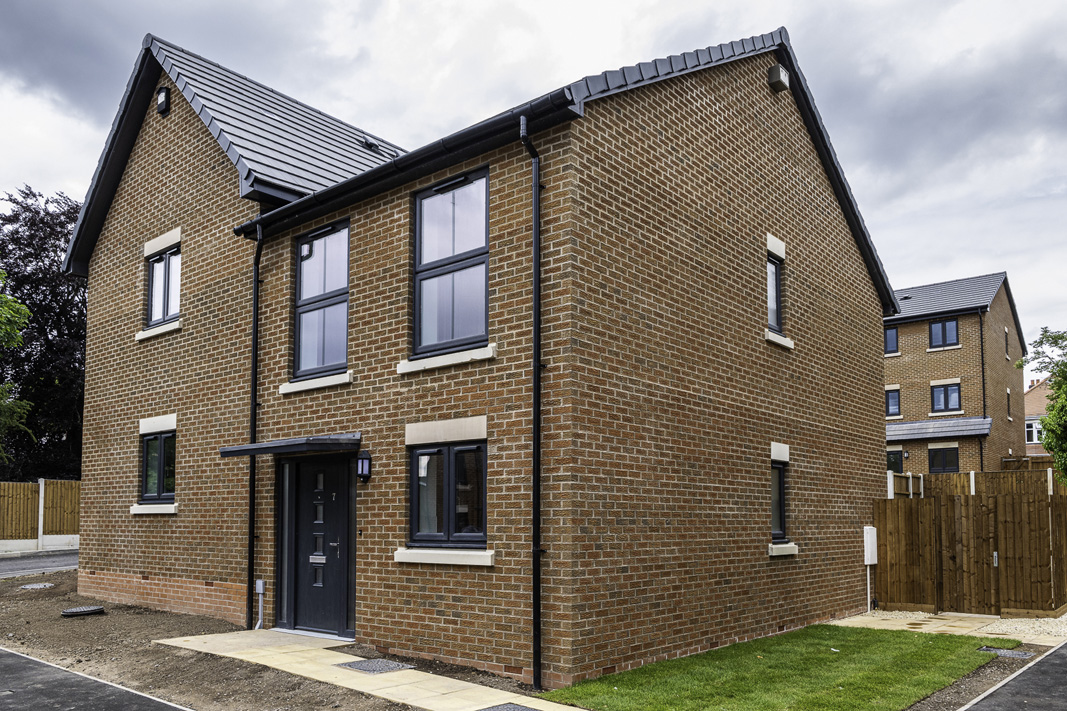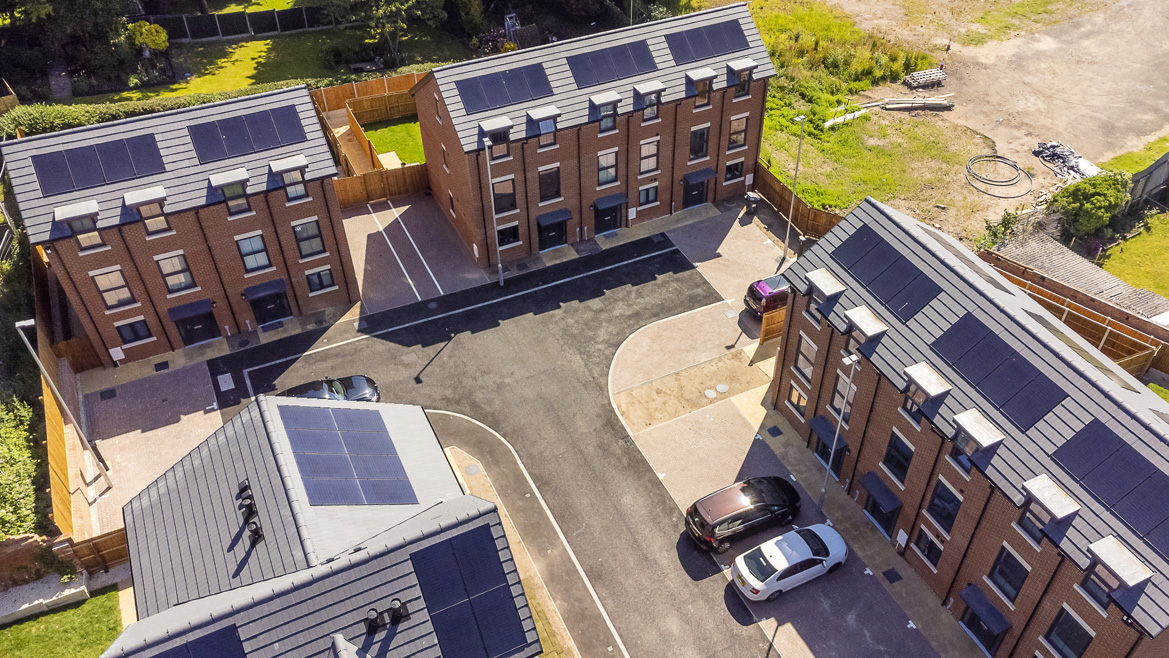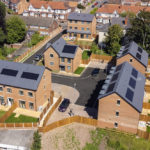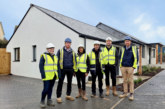A year-long study into the activity of people living in a development of low carbon homes has concluded that human lifestyles must adapt alongside the building technology in order to meet ambitious emissions targets.
A report published by Birmingham City University (BCU) has revealed that the development of 12 family homes in Handsworth, built by Midland Heart Housing Association and the Building Alliance, can operate with as much as a 70% reduction in carbon emissions when compared to similar houses with gas heating.
The improvements were achieved by increasing insulation, improving window specification, increasing the levels of airtightness, employing enhanced ventilation techniques and installing heat pumps and photovoltaic systems to help negate rising energy costs.
BCU collaborated with Midland Heart and the Building Alliance to build a mix of two-, three- and four-bedroom homes, then monitor their energy performance over a 12-month period.
The aim was to build houses that meet the UK Government’s 2025 Future Homes Standard, which will require all new homes built from 2025 onwards to produce 75-80% less carbon emissions than those built under 2013 regulations.
 A report into year one of ‘Project 80’, launched today (21st July) at BCU’s STEAMHouse building, concluded that the homes can achieve the reduction — but require occupants to understand how their houses work for full efficiency.
A report into year one of ‘Project 80’, launched today (21st July) at BCU’s STEAMHouse building, concluded that the homes can achieve the reduction — but require occupants to understand how their houses work for full efficiency.
Mike Leonard, Visiting Professor of Manufacturing and Construction at BCU, said: “Project 80 has demonstrated that it is relatively easy to create homes that can meet the 2025 regulation. They can be traditionally built using materials manufactured in the UK, traditionally styled, and provide comfort and resilience to meet changing climatic conditions.
“The challenge is to provide occupants with more information about their new home and its equipment, as well as information about their own lifestyle, to bring about low carbon living.”
The 12 homes were completed in May 2022, with residents moving in a month later.
Research carried by BCU found that occupants were “happy with their new homes and with the thermal comfort”, although some admitted it took time to adapt to the technology.
“We wanted to put the customer at the heart of the journey,” said Leonard, who is also CEO of the Building Alliance. “We were confident we could deliver homes that met the 2025 regulation, but it was vital to understand the behaviours of the people living in them.”
Interim research found that Midland Heart’s standard house types could be successfully adapted to meet the 2025 Future Homes Standard, with energy rating calculations showing an 80-90% reduction in carbon emissions.
 Data from real-life occupancy showed the houses could operate with up to a 70% reduction in carbon emissions against the same houses with gas heating.
Data from real-life occupancy showed the houses could operate with up to a 70% reduction in carbon emissions against the same houses with gas heating.
Dr Monica Mateo Garcia, from BCU’s Centre for Future Homes, commented: “The interviews with residents, conducted by BCU, showed the tremendous success of the project. However, a key lesson learned is how their lifestyles put pressure on the environmental conditions in the houses and often resulted in high energy use.
“Occupant lifestyle is a key factor in achieving Future Homes targets and more needs to be done to help residents understand heat pumps, ventilation and building performance as well as how their usage can optimise efficiency.”
Tony Hopkin, Head of Construction, Quality and Innovation at Midland Heart, said: “We are very aware the Future Homes Standard is a massive change and we wanted to learn more about the way we design homes, build them and maintain them, as well as find out more about the way people live in them.
“The overall cost of what we delivered was approximately 15% more when compared to the same house types constructed to 2013 Building Regulations due to being an early adopter.”
Professor David Boyd, from BCU’s Centre for Future Homes, added: “Uniquely, this project provides granular data on energy usage in combination with feedback from occupants on their experiences of using contemporary heating and energy equipment.
“It’s encouraging to see that heat pumps provide very comfortable conditions even in very cold periods. It’s also reassuring that the calculations show the house designs are working to their design performance targets.”
BCU and Midland Heart will spend another 12 months monitoring the Handsworth site.
They will also look at options for building Future Homes Standard houses for private sale as well as the efficient retrofitting of millions of existing homes.










